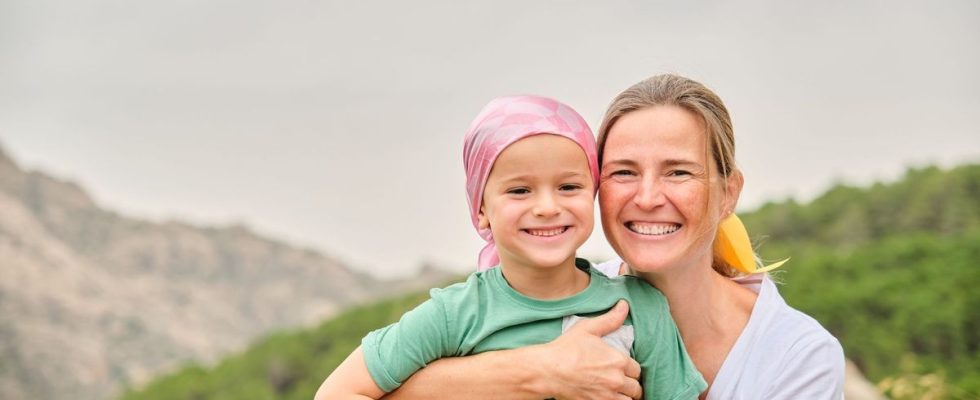Published on
Updated
Reading 3 min.
in collaboration with
Dr Fabienne Kochert (Pediatrician)
As World Childhood Cancer Day approaches this February 15, Afpa, the French association of ambulatory pediatrics, recalls that exposure to toxic products remains a factor of risk omnipresent in our environment. Pediatrician Fabienne Kochert gives us her advice.
1,800 new cancers are discovered each year in children under 15 in France, 700 in adolescents aged 15 to 18. A fact which in itself remains relatively rare so as not to worry parents unduly, and whose causes remain largely unknown. But, unlike adults, these affected children do not have the usual risk factors such as alcohol or tobacco. The hypothesis of exposure to dangerous products during their growth would therefore be studied closely by researchers and pediatricians.
The growing child, more vulnerable to his environment
For Dr Fabienne Kochert, pediatrician and former president of Afpa (French association of ambulatory pediatrics), the environment is today perceived as a global, internal and external threat to the health of our children. But a threat that is still difficult to grasp. “Children’s cancers are different from those of adults. They are mainly leukemiastumors of the central nervous system (brain and spinal cord tumors) and tumors of the lymphatic system called lymphoma. What we can say as a pediatrician is that we know that the child is a developing organism, and that as such, we must be vigilant with all the environmental factors that can interact with cell multiplication.
The reason is simply logical: if more cancers also occur today in adults because of their environment, early exposure can amplify the risk. “The doses are cumulative. The earlier we are exposed, in childhood, to these disruptors, the more likely we are to develop cancer, even if this has yet to be confirmed by observational data.”
What are the risks recognized in our environment?
Little by little, we are discovering that the air we breathe, and the materials that surround us from birth, can be the cause of health problems, disruption of neurodevelopment or even cancer. “Fears of prolonged or occasional exposure to potentially carcinogenic environmental agents give rise to concern among the general population. writes the Léon Berard cancer center on its site.
However, there are many risks assumed and studied, but not yet accused. The specialized site details several, official and unofficial.
- Only exposure to ionizing radiation is recognized as a risk factor for hematologic malignancies in children.
- Other risk factors have been established, such as non-ionizing radiation or extremely low frequency electromagnetic fields, exposure to radon and pesticides.
- Finally, parental occupational exposure to benzene, polycyclic hydrocarbons (PAH), and air pollution generated by automobile traffic are suspected.
Complex, childhood cancers are therefore the probable sum of a genetic background and several internal (in daily life) and external (via crops, pollution, etc.) exposures creating a network that is difficult to disentangle. And that needs to be further studied and regulated. But how can you act to protect your children?
“There is no point scaring parents, however, because we are incapable of eliminating everything, and I repeat, childhood cancers remain rare,” notes Dr. Kocher. “But with this in mind, there are reflexes that can act to reduce exposure at home. Which is already a first point.”
The expert advises in particular to be very vigilant throughout the pre-conception period, pregnancy and the child’s first two years, the most sensitive period during which the child is vulnerable.
- This includes opting for a healthy and organic diet if possible. “which is not perfect but which contains fewer pesticides”.
- To pay attention to coatings, paints, or even household products in your home”Santé Publique France has designed documents which give good advice for choosing paint, furniture, properly ventilating your home, etc. We have to seize it.”.
- Finally, adopting hygiene products adapted to the child is also a good reflex.because the child’s skin is particularly permeable“. In this case, the pediatrician advises going for the “simplest” products.
If we cannot fight against spreading in neighboring fields, these few tips and recommendations remain a sure step towards the good health of the child.
